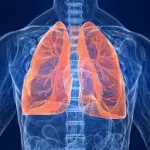Human behavior often defies logic and prediction, leaving even the most rational observers puzzled. The COVID-19 pandemic provided a stark example of this unpredictability when a global rush on toilet paper left supermarket shelves bare. While this behavior seemed irrational, researchers combined mathematics, economics, and behavioral science to create models that explained the spread of panic. This approach has since been extended to studying disease transmission, revealing the significant impact of human reactions on the development of outbreaks.
The Power of Context
Context heavily influences human behavior in unexpected ways. A prime example is the TV game show Deal or No Deal, where contestants frequently reject offers of guaranteed money in hopes of winning a larger sum. Rational calculations often suggest accepting the offer, but contestants often hold out for a slim chance at a bigger prize. This demonstrates that straightforward mathematical predictions can’t always account for human behavior.
The Science of Irrationality
Beyond mathematics, behavioral science delves into the motivations behind people’s actions. It suggests that setting realistic goals in a motivational context can lead to more rational decisions. However, emotions and context can override these rational goals, leading individuals to make seemingly irrational choices. Research has shown that contestants’ decisions on Deal or No Deal are “path-dependent,” influenced by their previous choices and experiences.
Group Behaviors and Disease Spread
Understanding group behavior, especially in the context of disease spread, falls within social psychology. Group behaviors and attitudes can influence individual actions, making groups sometimes easier to predict than individuals. During the COVID-19 pandemic, some mass behaviors, like panic-buying, were highly visible, while others, like self-imposed movement restrictions, were less so. Fear and perceived risk can drive positive mass behaviors, which in turn affect the spread of disease, creating a feedback loop often overlooked in traditional disease models.
New Research and Future Directions
Recent research published in the Journal of the Royal Society Interface combines population disease spread modeling with mass behavior modeling to understand the links between behavior and infection. This new framework accounts for dynamic, self-driven protective health behaviors during an outbreak, providing a more comprehensive understanding of disease burden and informing policy recommendations.
Predicting Behavior: A Complex Task
Predicting human behavior remains challenging due to the myriad factors involved, including emotion, context, risk perception, social observation, fear, and excitement. While mathematics is a powerful tool for describing and predicting patterns, it is not sufficient on its own. Addressing global challenges that require changes in mass behavior, from infectious diseases to climate change, necessitates interdisciplinary collaboration.
Conclusion
Can we predict human behavior? The answer is complex. While mathematics and probability offer valuable insights, they must be combined with other disciplines to fully understand and predict human actions. As society faces increasing challenges related to mass behavior changes, interdisciplinary research will be crucial in developing effective solutions.
For more information: Matthew Ryan et al, “A behavior and disease transmission model: incorporating the Health Belief Model for human behavior into a simple transmission model,” Journal of The Royal Society Interface (2024).











